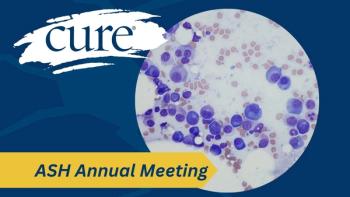
- Immunotherapy Special Issue 2020
- Volume 1
- Issue 1
New Immunotherapy Combinations Look to Create Maximum Velocity in Immune Systems Response to Cancer
Key Takeaways
- Combination therapies are advancing treatment for cancers resistant to traditional immunotherapy, targeting tumor-specific characteristics and genetic mutations.
- Immunotherapy combinations, like Opdivo and Yervoy, show promise in treating GI cancers, with FDA approvals based on significant trial responses.
New immunotherapy combinations aim to turbocharge the immune system’s attack against cancer.
After Susan Raphael received a diagnosis of pancreatic cancer in October 2018, she was treated successfully with surgery, radiation and 12 rounds of chemotherapy. Then, in February 2020, a PET scan revealed a Sister Mary Joseph nodule, a small abdominal lump near her navel that was a sign her disease had metastasized.
Raphael, who lives in Topanga, California, could have tried different chemotherapy, but her oncologists discovered a clinical trial that they believed offered a better chance of beating the disease. Participants receive a combination of two experimental drugs, along with the chemotherapy treatments nab-paclitaxel and gemcitabine.
One of the drugs is an immunotherapy that blocks PD-1, a so-called checkpoint protein that prevents the immune system from going into overdrive, making it difficult for immune cells to recognize and attack cancer. The other is a targeted drug that inhibits CD73, a protein that also suppresses the immune system and has been associated with a poor prognosis in several tumor types, including pancreatic cancer. Raphael receives the chemotherapy by infusion every week for three weeks and the immunotherapy and targeted drug every other week, taking a week off between cycles.
As of the end of April, Raphael’s nodule had shrunk and a blood test revealed a significant drop in her levels of carbohydrate antigen 19-9, a protein released by pancreatic cancer cells. She will remain on the regimen as long as her cancer responds to it.
Although she has had hair loss, stomach upset and anemia, the side effects have not prevented her from working full-time in the film industry and staying active outside of work. “I exercise every day, I’m painting, and I continue to work,” says Raphael, 64. “I have a lot of energy.”
Combination treatments offer new choices for treating patients with cancers that haven’t traditionally responded well to immunotherapy, including cancers of the gastrointestinal (GI) tract and breast and ovarian tumors. The combinations are designed to target specific characteristics of tumors, such as excess production of cancer-promoting proteins caused by genetic mutations, in ways that may make them more responsive to immune-boosting treatments.
CAPITALIZING ON TUMORS’ WEAKNESSES
Some immunotherapy combinations are already widely used to treat GI cancers. For example, in July 2018, the Food and Drug Administration (FDA) approved a pair of immune checkpoint inhibitors — Opdivo (nivolumab), aimed at PD-1, and Yervoy (ipilimumab), which blocks the protein CTLA-4 — for patients with metastatic colorectal cancer that is microsatellite instability (MSI)-high or mismatch repair deficient. Tumors with those characteristics have increased expression of neo-antigens, which makes them more visible to the immune system and, hence, potentially more amenable to treatment with checkpoint inhibitors.
A tumor’s MSI status can be measured with DNA sequencing or immunohistochemistry, which helps match eligible patients with immunotherapies and other targeted treatments. About 15% of colorectal cancers are MSI-high.
The FDA approval of Opdivo plus Yervoy was based on results from a trial involving 119 patients with colorectal cancer, 49% of whom responded to the combination. Among those responders, 19% were still well one year after starting the treatment.
The Opdivo-Yervoy combo has since been greenlighted to treat patients with hepatocellular carcinoma, the most common type of liver cancer. That approval was based on trial results in which 33% of the 49 patients who received the treatment responded, with 31% of those patients responding for at least two years. The mechanism of benefit is unclear, as MSI-high status is uncommon in liver cancer.
Researchers have started examining the potential of combining Opdivo and Yervoy in other GI cancers. In a trial involving 160 patients with metastatic gastric, esophageal or gastroesophageal junction cancer, with results published in 2018, 17% of participants taking one of the two doses that were tested experienced no disease progression for one year. Most of the participants had previously been treated with chemotherapy.
Now the National Cancer Institute is sponsoring a clinical trial investigating the potential of the combination, along with radiation and chemotherapy, in patients with earlier-stage disease, prior to surgical removal of their tumors. Another combination approaches showing efficacy in GI cancers involves VEGF inhibitors, or anti-angiogenesis drugs, which work in part by normalizing the leaky blood vessels that feed tumors. These drugs were initially developed to starve tumors of the oxygen and nutrients they need to survive but may also improve the ability of immune-boosting drugs like checkpoint inhibitors to treat tumors.
“The blood vessels in tumors are abnormal; they have a lot of holes in them,” says Dr. G. Dan Duda, associate professor of radiation oncology at Harvard Medical School and director of translational research in gastrointestinal radiation oncology at Massachusetts General Hospital in Boston. Fixing those leaks “creates better flow and improves tumor oxygenation,” he says, allowing immune cells to flood into the tumor and more efficiently attack the cancer.
In a trial pairing the VEGF inhibitor Avastin (bevacizumab) with the PD-L1 checkpoint blocker Tecentriq (atezolizumab), the time until disease progression in patients with hepatocellular carcinoma improved by an unprecedented 41% over treatment with the multikinase inhibitor Nexavar (sorafenib), a pan-VEGF receptor inhibitor. On May 29, the FDA approved the combination for the initial treatment of hepatocellular carcinoma that can’t be removed with surgery.
The strategy of combining Tecentriq with Avastin is also being investigated in colorectal cancer, both for treating MSI-high tumors and along with chemotherapy in all patients with metastatic disease regardless of MSI status. Moreover, combining Stivarga (regorafenib), another multikinase inhibitor drug, with Opdivo showed intriguing response rates in patients with colorectal and gastric cancers, and this combination is now being pursued in multiple trials in gastrointestinal cancers, Duda says.
Other strategies in the works combine immunotherapy with drugs that target the cancer-driving proteins generated due to certain gene mutations in tumors. A trial that completed last year tested the PD-1-inhibiting immunotherapy Keytruda (pembrolizumab) with the targeted drug Herceptin (trastuzumab) in patients with gastric cancer whose tumors had tested positive for HER2, a protein that is overexpressed and promotes growth in certain cancers, including gastric, breast and ovarian. Herceptin is already approved to treat patients with HER2-positive breast and gastric cancers.
In that trial, the combination treatment produced responses in 87% of 32 patients. It was particularly notable because just 47% of patients with HER2- positive gastric cancer in a large trial of Herceptin plus chemotherapy responded. Now several additional immunotherapy combination studies are underway in HER2-positive gastric cancer, including some that combine Keytruda and Herceptin with chemotherapy.
FORGING NEW IMMUNE PATHWAYS
Blocking CD73, the strategy at the heart of the clinical trial that Raphael joined, could prove useful beyond GI cancers. CD73 plays an important role in the body’s production of adenosine, a substance in the tumor environment that dampens immune responses. Several studies underway are combining experimental anti-CD73 drugs with checkpoint inhibitors in triple-negative breast cancer, a particularly aggressive and hard-to-treat form of the disease. “The idea is to try to find a link between stimulating the immune system and making checkpoint inhibitors work better,” says Dr. Lee Schwartzberg, chief medical director of West Cancer Center and a professor of medicine at the University of Tennessee Health Science Center in Memphis.
Another potential strategy for achieving that synergy in triple-negative breast cancer involves combining checkpoint inhibition with drugs that inhibit a protein called poly (ADP-ribose) polymerase, or PARP, which cancer cells need to repair their DNA. In a phase 2 study using Keytruda plus the PARP inhibitor Zejula (niraparib) in 55 patients with metastatic triple-negative breast cancer, five participants had complete responses and another five showed partial responses.
The response was particularly strong in patients whose tumors harbored mutations in BRCA genes because these cells already have impaired DNA repair. Among the 15 participants with BRCA tumor mutations, seven had some response to the combination treatment.
The participants were also tested for PD-L1, a biomarker that helps identify patients who are likely to respond well to checkpoint inhibitors. Interestingly, although response was more pronounced in patients with PD-L1-positive tumors than those with PD-L1-negative tumors, there were strong responses in patients with both high and low levels of the protein. “This was intriguing, because checkpoint inhibitors by themselves have little activity in triple-negative breast cancer, particularly in late-line treatment,” Schwartzberg says.
Why does inhibiting PARP make breast tumors more amenable to checkpoint inhibition? Animal studies showed that PARP inhibitors stimulate a particular pathway that increases the activity of the immune system, according to Schwartzberg. “That allows checkpoint inhibitors to work better,” he says.
A trial of the same combination in chemotherapy- resistant ovarian cancer was also encouraging. Among the 62 participants, 11 responded to the treatment and 28 had stable disease. A study evaluating PARP and checkpoint inhibition together in ovarian cancer patients who do respond to chemotherapy recently started, this one combining Opdivo with the PARP inhibitor Rubraca (rucaparib).
The combination of anti-angiogenic drugs with checkpoint inhibitors that has shown promise in some GI cancers is now being tested in ovarian cancer. In a phase 2 trial combining Opdivo with Avastin in relapsed ovarian cancer, 11 of 38 participants responded. The rate was highes among patients who had a positive outcome after being treated with platinum-based chemotherapy.
Future studies of immuno-oncology combination treatments could help answer important questions about how genetic abnormalities influence patient responses. BRCA mutations, for example, can be inherited, known as germline mutations, or acquired, occurring solely in tumors. The trial combining Keytruda with the PARP inhibitor Zejula examined BRCA mutations in breast tumors but did not focus on germline mutations.
“We know that patients with germline BRCA mutations respond nicely to PARP inhibitors as monotherapy,” Schwartzberg says. Additional information about the role of germline BRCA mutations in response to combination treatments could help oncologists identify which patients are likely to respond well to them.
Future studies should also improve the understanding of how combining drugs that all work differently in the body can contribute to side effects. So far, most of the side effects reported in clinical trials of immuno-oncology combinations mirror those that are commonly reported with each drug alone. In some cases, in which a patient takes two checkpoint inhibitors, side effects could be significant, because immunotherapies that target CTLA4 are more toxic than those that target PD-1 or PD-L1. On the other hand, in the trial combining Keytruda with Zejula to treat breast cancer, common side effects were nausea and anemia, which were easily treated.
Raphael has so far experienced fewer side effects in the clinical trial combining chemotherapy with two experimental immuno-oncology drugs than she did during her initial treatment for pancreatic cancer, a harsh regimen of five chemotherapy drugs. “I’m back doing 7-mile hikes on the weekends, sometimes more,” Raphael says. “I’ve been active throughout. And I feel lucky to have had the opportunity to be in the trial. I did everything I could with conventional treatments, but now is the time to explore all the exciting new developments in immunology.”
Articles in this issue
over 5 years ago
Speaking Out: Taking Action Against Skin Cancer




